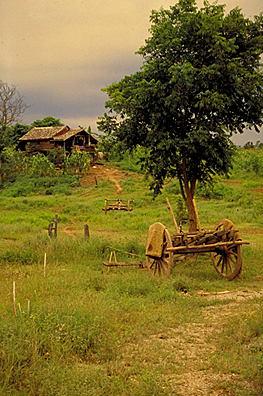Thailand
An introduction to the geography, economy and people of Thailand.
Thailand Facts
Thailand has a tropical climate, which is hot, humid and wet. The capital city of Thailand is Bangkok. The land area of Thailand is about 514,000 km² and its coastline is 3219 km long. Natural disasters occurring here are droughts and land subsidence. Plains can be found in the central area and the Khorat Plateau is found in the east. Agriculture is spread across the country. Tin, rubber, natural gas, tungsten, tantalum, timber, lead, fish, gypsum, lignite and fluorite are major natural resources here. Doi Inthanon is the highest point, about 2576m tall. Chiang Mai, Songkhla, Sukhothai, Ayutthaya and Bangkok are all tourist attractions and cities/towns in Thailand.

Thailand is the only South East Asia country never to have been taken over by a European power. Thailand is a constitutional monarchy. The head of government is Prime Minister Thaksin Shinawatra. The Council of Cabinet Ministers is by the Prime Minister. There is also a Privy council. There are elections in Thailand for the Parliament. The legislative branch consists of a National Assembly consisting of the Senate and the House of Representatives. The judicial branch consists of a Supreme Court whose judges are appointed by the monarch.
After enjoying one of the world's highest economic growth rate from 1985 to 1995 - averaging almost 9% annually - increased speculative pressure on the Thai baht in 1997 led to a crisis that uncovered weaknesses in the financial sector and forced the government to float the baht. Long pegged at 25 to the dollar, the baht reached its lowest point of 56 to the dollar in January 1998 and the economy contracted by nearly 10% that same year. Thailand entered a recovery stage in 1999 and preliminary estimates are that the economy expanded by about 4% - most forecasters expect similar growth in 2000. Beginning in 1999 the baht stabilised and inflation and interest rates began coming down. The Thai government has cooperated closely with the IMF and adhered to its mandated recovery program, including passage of new bankruptcy and foreclosure laws. The regional recovery boosted exports, while fiscal stimulus buoyed domestic demand. While slow progress has been made in recapitalising the financial sector, tough measures - such as implementing a privatisation plan and forcing the private sector to restructure - remain undone.
The population of Thailand is about 61,230,874 and the population growth rate is about 1%. Life expectancy is around 68.5 years at birth. Thailand is mainly Thai (75%), Chinese (14%) and others (11%). Religions in Thailand are Buddhism (95%), Islam (3.8%), Christianity (0.5%), Hinduism (0.1%) and other (0.6%). Languages spoken in Thailand are Thai, English, ethnic and regional dialects. The literacy of the total population is 93.8%.
Ideally, this website should be viewed using Internet Explorer 5.